
Supporting your professional development
Professional resources
Find articles, videos and ebooks developed by experts to help expand your oral health knowledge.


prevents-cavities
The Total Package - Active Prevention, Advancing Oral Health Protection For Your Patients
In this article for Colgate-Palmolive, I will be sharing with you the science behind the Colgate Total Active Prevention toothpaste, which contains stannous fluoride, and the unique way in which the toothpaste is stabilized to ensure high bioavailability of the stannous ions.
ARTICLE

prevents-cavities
Educating our patients about the disease-diet relationship
We know that oral health is associated with diet in many ways, and we can track this back to ancient times. Dental palaeopathology or the study of ancient teeth, reinforces for us, as oral health professionals, the importance of addressing dietary habits and behaviors with our patients.
ARTICLE

gum-health
The art of saying no as a new graduate
Having recently begun work as a graduate dentist, my first few months were defined by an incredibly steep learning curve. While I readily embrace the clinical feedback imparted by my mentors, being more assertive is advice that I have always struggled to take.
ARTICLE

gum-health
Identifying and overcoming barriers to oral health-promoting behaviours
Taking the time to understand and work through the unique barriers to performing at-home oral hygiene and accessing professional care is a core responsibility of our profession that can elicit satisfying changes in our patients’ behaviour and oral health.
ARTICLE

whiter-teeth
Teeth whitening explained, plus top tips to maintain a white smile
Tooth whitening. A procedure performed by so many dental professionals, it is one of the most commonly-encountered topics when patients come to see me. It is generally one of the first things they mention when I ask them what they want to improve about their smile.
ARTICLE

orthodontics
The importance of practice culture and how it can make or break a career
I thought that I no longer enjoyed dentistry. Turns out, I just no longer enjoyed where I was practicing. I made the move to work outside the clinical environment with a six-month break before working one day per week clinically. Making these changes helped to reignite my enjoyment of working in the dental profession. However, it was not the dentistry that was causing me grief. As part of my Master’s in Public Health I undertook a public health management subject where I learnt about leadership vs management, how personality affects leadership style through the Myers Briggs personality test but importantly culture and it was there I clicked that that was what was affecting my enjoyment in work
ARTICLE

kids-oral-health
Oral care in Australian children – what could we be doing better?
In the whirlwind of parenting, the pursuit to simply meet bub’s basic needs can feel overwhelming at times. It’s often not until parents notice changes in their little one’s behaviour that they realise that perhaps one of the more essential aspects of their care has been overlooked and, by that point, it’s often too late.
ARTICLE

gum-health
The Economics of Oral Disease Prevention.
The Dutch philosopher Desiderius Erasmus Roterodamus from the 1500’s once said, ‘prevention is better than cure’. This famous phrase still resonates with us today into the 21st century and it is particularly relevant to oral disease prevention. According to the most recent Child and Adult Australian National Oral Health Surveys, about 1 in 4 children aged 5-10 years old have untreated dental caries in the deciduous teeth, and about 1 in 3 adults have untreated dental caries and moderate-severe periodontitis.
ARTICLE

nutrition
Social determinants of health impact oral health and access to care.
Social determinants of health can greatly impact individual health. For rural and remote Australians, geographic location can impact both oral health status and the ability to access oral health care. Working in such locations can be difficult, but a satisfying career choice.
ARTICLE

orthodontics
A career beyond the dental chair? What are some of the options for oral health professionals?
Each year that ticks around I pause at the question asked, when renewing my AHPRA registration, ‘How many more years are you likely to practice within the dental profession?’. In my first few years I would enter a large, overwhelming number that would make my head spin; am I really going to be drilling and filling for that many more years?! With fear of monotony, burnout and fatigue more evident in society, many of us may question, ‘what else can I do with my degree?’. Clinical dentistry does not have to be the sole role for dental professionals, many pathways exist beyond the dental chair with many others yet to be discovered.
ARTICLE

nutrition
How to succeed in an ever-changing environment of increased uncertainty: the importance of mentoring.
A constant question on a new grad’s mind is whether or not their skills are adequate for the first year of their professional career. Self-doubt, the need for validation, and for some, lack of confidence, are core parts of a young dental professional’s journey and with the added difficulties COVID-19 places on health professionals, it can become overwhelming and leave you feeling vulnerable. How you respond and prepare for these challenges is a crucial part of initiating a lifelong career filled with growth and learning.
ARTICLE

gum-health
Decision making in dentistry, it’s not always easy
Have you ever been faced with a patient requesting a treatment that you felt was perhaps not the best course of action, outside your scope or comfort zone, but you felt external pressures to complete it? Working as a dental practitioner comes with the territory of making tough decisions – whether it is prescribing treatments or respecting your limits by knowing when to refer, or if you should decline providing a certain treatment.
ARTICLE

orthodontics
Becoming a better you - Taking the next step in your dental professional development and reaching your goals
Oral health professionals may at times question how to take those so-called “next steps” to improve on their clinical and professional skills. It, at times, can appear to be a big leap from their current skill set, as there could be a certain more advanced set of skills or attributes that they’ve always wanted to acquire, but are not sure how to even start doing so. In this article, Dr Sam Koh breaks down some of his thoughts about professional development, describing key steps to take when attempting to improve on your current professional skill set and discussing how to set realistic goals to achieve.
ARTICLE

gum-health
Motivational interviewing: a patient centred approach.
Motivational interviewing (MI) can become a powerful tool in dentistry to improve our communication skills. The oral health messages that we have to offer our patients can sometimes become monotonous and not patient-centred. MI is a counselling method which involves enhancing a patient’s inner motivation to change which is guided by four main principles represented by the acronym RULE: Resist the righting reflex; Understand the patient's own motivations; Listen with empathy; and Empower the patient.
ARTICLE

gum-health
Going green: How can we as dental professionals make our practice more sustainable?
According to the Australian Government’s Department of Industry, Science, Energy and Resources, Australia generated 67 million tonnes of waste in the year 2016-2017 (Australian Government 2020). Dental care, both at home and in the clinic can be seen to produce significant levels of single use waste. With global waste levels rising, what strategies can we as dental professionals implement to decrease the level of landfill associated with oral health care?
ARTICLE

gum-health
Fads, Fiction and Facts: Navigating the world of fads and how to discuss this with our patients
“Fake news” seems to be today’s “real news”. Gone are the days where people relied solely on the morning newspaper and the 6 o’clock news for their information, or their trusted health professional for up-to-date oral health advice. We now have so-called experts and sources anywhere and everywhere, which, through all the various media platforms out there such as social media, have the ability to reach our patients in ways they were never able to previously. With the plethora of sources, this can no-doubt cause some confusion to our patients. There is a probability that many of these sources are not professionally educated, which may then lead to potential health ramifications for our patients. We as the true oral health professionals need to therefore be firstly aware that this is happening, and secondly, understand the basis of these fads so we know how to tackle them head-on. As professionals, we need to differentiate ourselves from these other sources and be able to provide our patients with a much clearer understanding of what is fact or fiction.
ARTICLE

gum-health
Mental health for dental professionals
We all know that feeling after a busy day at work….absolutely exhausted ( both physically and emotionally). A day that may have started off as another ordinary day, can quickly turn into a day mixed with many Relief of Pain Patients( ROPs), traumas and other unexpected turns of events. Amongst these appointments, the day can be compounded further with anxious patients, complex treatments and late attenders. All of these factors can combine to form an overwhelming amount of stress. Summarised well by Dental Practitioner Support (2020), “Those in the dental profession can be exposed to stress at work or during study, as well as psychological, cognitive and physical demands which may negatively impact mental health”.
ARTICLE

gum-health
Communication: The Transition From Student to Dentist
Graduated, found a job and have started seeing patients. The daunting transition from student to dentist. For those of you who are in the midst of this transition period, I am right there with you! Scary and exciting, all at the same time.
ARTICLE

gum-health
Reading Between the Lines to Help our Patients Make Informed Decisions
Today, more than ever our patients are armed with significant access to health information from a range of sources. The internet is full of advice and health claims. A quick google search and you can find health claims for home remedies to heal decay, straighten teeth and a myriad of unsubstantiated claims surrounding water fluoridation.
ARTICLE

gum-health
Dentists in Prime Position to Provide Nutrient-rich Education
As dental professionals, we are in a prime position to discuss nutrition with our patients and of course, the main topic that comes to mind is sugar! Nutritional information, particularly regarding sugar consumption, is available en masse to the public, particularly through social media. However, these sources, who often possess no formal qualifications, usually do not consider sugar and its effects on oral health when providing advice, therefore recipes online touted as ‘added sugar free’ or ‘refined sugar free’ may still have high cariogenicity. Regarding sugar, the best advice for Australians to follow is the recommendations made by the World Health Organization (WHO). WHO’s 2015 Guideline on sugars intake for adults and children1 made a ‘strong’ recommendation that intake of free sugars should not exceed 10% of total energy intake (approximately 48 grams or 12 teaspoons) for the prevention of unhealthy weight gain or dental caries. WHO made an additional ‘conditional’ recommendation that intake of free sugars should not exceed 5% of total energy intake, providing additional health benefits, in particular, in relation to dental caries. In 2011-12 the Australian Bureau of Statistics (ABS) reported 14-18 year old males consumed an average of 92 grams of free sugars per day (22 teaspoons) while their female counterparts consumed an average 70 grams (17 teaspoons)2. These values well and truly sit above WHO’s recommendations, which reference all mono and disaccharides added to foods, as well as sugars in syrup, honey, fruit juice and fruit juice concentrate. WHO’s recommendations do not include the sugars naturally present in milk, milk products or whole fruits, vegetables, and grains. Food Safety Australia and New Zealand (FSANZ) report consumers have trouble classifying sugars as ‘natural’ or ‘added’ and perceive that ‘natural’ sugars are healthier.2 This belief can be potentially damaging when ‘natural sugars only’ is a commonly used advertising tactic, yet the food item may contain well over 15 grams of sugar per 100 grams, above which, sugar content is considered high. Without appropriate knowledge, individuals will meet their recommended daily intake much more quickly and potentially increase their risk of tooth decay and/or weight gain. But who can blame people for their confusion, really? Sucrose, refined cane sugar, agave syrup, brown sugar, high-fructose corn syrup, lactose, glucose… Free, added, natural, total… There are over fifty terms that can be used to describe sugar as an ingredient in foods and drinks. Nutrition, in particular regarding sugar consumption, should be a staple discussion between oral health professionals and patients. Look to provide feedback on what patients already know, tailor advice as necessary and help to set goals. But do not forget to account for social determinants including individual health literacy when discussing such topics. Consider adding to the traditional advice provided by dentists to reduce intake frequency and ensure that patients do not instead consume the same amount of sugar in a single daily sitting rather than through frequent snacking. Discussions should encourage not only to reduce the frequency of intake but also a total reduction in free sugar consumption; as health professionals, we must consider whole body health, not just the mouth. Along with WHO’s recommendations, suggestions for patients and/or their parents/carers could include the following: Consume 2 serves of fruit and 5 serves of vegetables daily, as per the Australian Dietary Guidelines.3 Fresh fruit makes for a great snack or dessert option, or for something less sweet, consider cheese or nuts, while vegetables make a great snack for any time of day. When reviewing the Nutrition Information Panel (NIP), look for foods with less than 15 grams of sugar per 100 grams, however, ideally, try for those with less than 5 grams. If sugar is included in the top three ingredients on the NIP or the listed ingredients includes multiple references to sugar, consider looking for a healthier alternative. When replacing free sugars in the diet, do so with starch-rich staple carbohydrates such as bread, cereals, rice, pasta (preferably wholegrain) and fresh fruits and vegetables.4 Carry a reusable water bottle to encourage the consumption of tap water rather than purchasing sugar-sweetened beverages. FSANZ reports that sugar information is one of the first elements that Australian consumers look for on the NIP.2 Therefore as health professionals we should continue to provide brief interventions and discuss this important topic with patients to empower them to enact this behaviour, however, look to also support programs and policies developed for population-scale changes. 1 Guideline: Sugars intake for adults and children. Geneva: World Health Organization; 2015. 2 Policy context relating to sugars in Australia and New Zealand. Food Standards Australia and New Zealand; 2017. 3 Eat for health Australian Dietary Guidelines. NHMRC; 2013. 4 Moynihan P, Makino Y, Petersen PE, Ogawa H. Implications of WHO Guidelines on Sugars for dental health professionals. Community Dentistry and Oral Epidemiology. 2018;46:1-7. About the Author: Dr Mikaela Chinotti, BDS, MPH, has been practising as a general dentist for 7 years. She has previously worked in rural and regional government, private and health fund owned practices in North Queensland. Her passion lies in minimal intervention dentistry, health promotion and health education. Now in Sydney, Mikaela works as the Australian Dental Association (ADA) Oral Health Promoter as well as part time as a general dentist.
ARTICLE

gum-health
Working in a Country Area: Why Should You Take the Plunge?
Working in a rural environment is a thought often considered amongst new graduates. Many may recall a rural placement as part of their studies and reminisce about the good (or sometimes not so good) experience that they had. Rural dentistry introduces its own unique challenges; however, it also has many advantages.
ARTICLE

gum-health
Effective Communication: Understanding the patient and being adaptive
Patient communication is constantly underrated and undervalued. However, the world we live in is constantly-changing, with the advent of new information sources such as alternative websites and social media. We need to therefore be at the forefront of information and stay on top of everything, steering our patients on the right path towards better dental health. It is seldom talked about during dental school, yet our dental communication is the vital bridge between our comprehensive understanding of our patient’s dental health and their acceptance, acknowledgement and willingness to address the situation.
ARTICLE

prevents-cavities
Enhancing Personalised Oral Hygiene to the Next Level
Research has shown there is limited high-quality evidence to support recommending any specific one‐to‐one oral hygiene advice in dental settings as being effective in improving oral health, or being more effective than any other method. It is not surprising since behaviour change is very difficult to achieve. Furthermore, individual oral health literacy and motivation to attend regular dental care is highly variable.
ARTICLE

gum-health
Oral Health Outreach: Nurturing Future Generations Towards Sustainable Health Practices
We have all encountered patients whose poor health literacy has been to the detriment of their oral health-related quality of life, with their caries experience, periodontal condition, and attitudes towards visiting the dentist being influenced by their lack of access to adequate health education in their formative years. Thus, as outlined in the Australian Dental Association’s 2017 Australian Dental Health Plan, there is a significant need for members of our profession to undertake educational campaigns to promote positive oral health messages in the wider community. Schools provide an effective platform for the delivery of such messages early in life, which may foster their life-long adoption of beneficial attitudes and lifestyle habits that will allow them to maintain optimal oral and general health.
ARTICLE

gum-health
Considering Health Literacy For Improving Patient Retention
As a newly practicing dentist, patient retention may present as a challenging factor to face. Even with great clinical skills, sometimes you may still face the issue of retaining patients. Leaving dental school, we are armed with knowledge, however taking the steps to ensure your patients understand and act on the information provided can improve patient decisions and outcomes as well as retention.
ARTICLE

gum-health
More Than Just the Mouth: Refining Relationships With Other Professionals and Health Providers
You’ve finally graduated and millions of thoughts buzz through your head as you refine your clinical skills treating patients. It’s a steep learning curve and you begin to notice aspects of your patient’s health that extend beyond the oral cavity, yet still impact upon their dental health. Whilst we all do a wonderful job of managing our patient’s oral health, it’s a time to reflect on the importance of establishing strong interdisciplinary relationships with other professionals and health providers.
ARTICLE




whiter-teeth
Teeth whitening – What are the options?
You’ve finally graduated and millions of thoughts buzz through your head as you refine your clinical skills treating patients. It’s a steep learning curve and you begin to notice aspects of your patient’s health that extend beyond the oral cavity, yet still impact upon their dental health. Whilst we all do a wonderful job of managing our patient’s oral health, it’s a time to reflect on the importance of establishing strong interdisciplinary relationships with other professionals and health providers.
ARTICLE

gum-health
Dental hygienists' role with special needs patients
Patients with special needs are classified as all individuals who present physical, sensory, mental, developmental, medical or cognitive limitations, and who require special consideration when receiving dental treatment. The scope is broad considering the multitude of cases that may fit under these categories. These conditions necessitate special dental treatment plans, medical management and use of specialised programs or services to prevent or treat oral health problems.
ARTICLE

orthodontics
A reflection on recent graduate experiences: navigating the first year out
Having finally secured that coveted first job, the reality of life after dental school slowly sets in. New to a land without tutors casting a watchful eye over our shoulders, imposter syndrome is rife. While setting forth empowered with four or five years of dental knowledge, the reality of stepping into practicing life is that we frequently encounter difficult situations that make us feel out of our depth. In this article, Emma touches on her experiences and learnings as a graduate dentist.
ARTICLE


gum-health
The Importance of Saliva for Oral Health - Top 5 Tips
As dental professionals, when we consider the components that make up an individual's dental health and hygiene, we first think of the teeth and gums. However what is possibly the most important component to the function and health of the oral cavity is saliva.
ARTICLE

gum-health
Practicing Social Responsibility as dental professionals: how we can facilitate a positive impact
As dental professionals, there are numerous ways that we can practice a high level of social responsibility and advocate for better community oral health outcomes. Read on to learn of the strategic areas to focus upon when looking to improve one’s social responsibility.
ARTICLE

prevents-cavities
Caries management in dentistry
Fluoride is the cornerstone of caries prevention with numerous methods of application including that applied by professionals, along with toothpastes, mouthwash, water fluoridation and once upon a time supplements in the form of tablets or drops. With all these sources of fluoride and different methods of application for at home and professional use, what methods should be used?
ARTICLE

prevents-cavities
Helping your patients’ to modify their diet to limit harm to their teeth
Part of our role as dental professionals is to educate our patients on oral hygiene and their oral health. Besides discussing brushing and flossing habits, I personally find myself speaking to my patients regularly about preventing dental decay and acid wear by modifying their dietary habits.
ARTICLE

gum-health
Mental Health - How Mentorship Can Keep The Journey Stable
Graduating from dental school and becoming a fully registered dental professional can be an exciting chapter of life and marks the beginning of our professional careers. However dental school only provides the foundational skills for us to be safe clinicians. Our journey of learning truly begins the first day on the job as qualified dental professionals.
ARTICLE

orthodontics
Oral hygiene for different restorations and appliances
It is essential that patients have a clear understanding of the oral hygiene practices required to keep their prostheses, and restorations, in good condition. Good care may limit the need for replacement in a shorter-than-anticipated time frame.
ARTICLE

kids-oral-health
Pregnancy dental care and oral health in pregnancy: an interrogation of old wives’ tales circulated by patients and practitioners alike
During gestation, the human body overhauls almost all of its physiological systems to support additional human life. Of particular relevance to the oral cavity are the contributions of altered gastrointestinal (think morning sickness in all its erosive glory) and immunological function (consider the aggravated response of the periodontal tissues to bacterial challenge - pregnancy gingivitis).
ARTICLE


gum-health
Managing dental anxiety in a dental patients - strategies and techniques
As dental professionals one of the most common demographic of patients we manage and treat are those with dental anxiety. Especially early in the career, it can be quite challenging managing their anxiety to allow you to safely and effectively provide the necessary dental treatment and care they require. Within this group of patients, a subset suffer from poor oral health, only visiting the dentist when there is a severe toothache.
ARTICLE

4 Ways you can create a safe and inclusive space for LGBTQIA+ patients in the dental clinic
LGBTQIA+ patients are often subject to a great deal of societal stigmatisation and discrimination. Read on to learn how to create a safe and inclusive space for LGBTQIA+ patients in the dental clinic.
ARTICLE


gum-health
Occlusal Guards - How they protect teeth
Recent global events causing uncertainty of the future, and change from our normal ways of living prior to COVID-19, has led to an increase in patients presenting with worn, chipped or cracked teeth. Increased stress levels in life lead to increased or new incidences of grinding and clenching habits during the night or day which may not have previously existed, leading to significant shear forces being exerted on teeth and fracturing or wearing the enamel. Whilst the foundations of prevention in dental health have previously focussed more on the oral hygiene habits of regular brushing and flossing to maintain healthy gums and teeth, protecting the biting surfaces of the teeth from grinding and clenching is now an additional, critical, preventative focus. One great way to help protect your patient’s teeth in the long term is the use of an occlusal guard.
ARTICLE

gum-health
Choosing the right toothbrush
Shopping for a new toothbrush can be a daunting task, with the shop aisle usually stacked with a vast array of options of brushes in all different sizes, shapes and styles. With new brushes coming out regularly, how do we know what to recommend to our patients to buy for their oral hygiene? In this article, Dr Sam Koh discusses some of the key elements of what to look for when choosing a toothbrush.
ARTICLE


gum-health
Dentinal Hypersensitivity:
As dental professionals one of the greatest dental concerns our patients report when they sit in our chair is experiencing sensitive teeth. Learning how to help our patients manage this condition ultimately helps us improve their dental health, well-being and quality of life. From my own clinical experience, I share my top tips to help you manage dentinal hypersensitivity in your patients.
ARTICLE


gum-health
Oral health care for the eldery and modifying approaches
Oral health not only refers to the absence of dental diseases but its contribution to general well-being and quality of life, which is more difficult to achieve with age. Learning about the characteristics of the elderly population can give helpful insights on oral health care for the elderly. Treating the elderly population poses many challenges for oral health professionals especially when implementing preventative strategies. Clinicians have to consider deterioration of physical and mental health, medical condition(s) or polypharmacy when managing this cohort. This unique group of vulnerable individuals become the main consumers of primary health care services and are a high-risk group for dental diseases. Modifying approaches to oral health care is important in providing a more patient-centred care plan.
ARTICLE


orthodontics
Burnout and self care in Dentistry
As dental professionals, we undoubtedly experience many challenges and stresses in our careers from treating patients who are anxious about dentistry but also providing treatment to patients whilst they are conscious. Without proper care and management of these stresses and challenges, it can be easy for dentists to feel overwhelmed and eventually burnout. In this article you will understand what burnout is and how you can utilise self care habits to prevent it from happening in your career.
ARTICLE
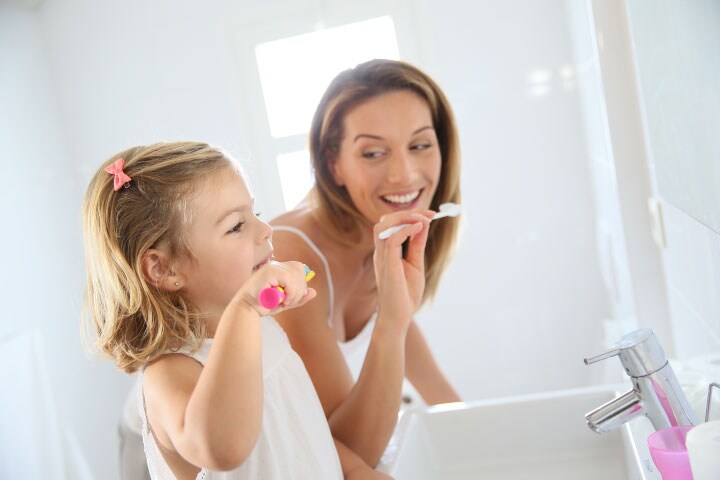
kids-oral-health
Oral Disease in children: How to motivate child patients
The intention of this article is to highlight the importance of adapting communication when treating children. Motivating children to learn about oral disease, and change oral health habits can be challenging. There are different techniques and resources that can help oral health professionals understand childrens’ unique learning styles.
ARTICLE

prevents-cavities
Reframing dental care towards preventive care
Oral disease processes are insidious and progressive, often remaining invisible to the layperson until the end stage. Self-diagnosis is often delayed until patients notice irreversible signs - frank cavitation as caries undermines marginal ridges and advances inexorably towards vulnerable pulps, progressive tooth mobility or gingival recession with declining periodontal health and functio laesa in the case of expanding oral cavity neoplasms that may have begun as subtle precursor lesions. If evading the watchful eye of a supervising dental practitioner, ailments of the intraoral hard and soft tissues can easily go unchecked until patients experience advanced disease, at which point it becomes increasingly invasive and expensive to manage. Dental professionals have the capacity to identify disease risk factors and to detect signs of disease at the pre-symptomatic stage, at which point it is possible to arrest and reverse disease progression by providing tailored lifestyle counselling to encourage health-promoting behaviours. This article will delve into current barriers to our transition away from the reactive modus operandi of dental healthcare towards a more medical, person-centred model of caries management to break the restorative death spiral and curb rates of edentulism in our community
ARTICLE

nutrition
Pasifika/Māori Oral Health: Simple and cost effective ways for families to look after their teeth
This article highlights some key areas that will help oral health professionals think more broadly about oral health care for Pasifika and Māori. Developing an awareness around holistic health and achieving their oral health goals through a good home care routine and regular maintenance are key areas to focus on.
ARTICLE

gum-health
An interview with Colgate Scientists: An insight into R&D and product development
We are all used to simply going to the shelves of the supermarket or pharmacy to purchase our oral care products such as toothpaste and floss. But how exactly do these products come about? How does a product get developed, from an idea or new ingredient to a finished product that we can then use at home? How do they know it works? To get some insight and answers on Colgate’s research and product development, I decided to take matters into my own hands and interview some of Colgate’s scientists within their research group at the global technology center to find out more!
ARTICLE

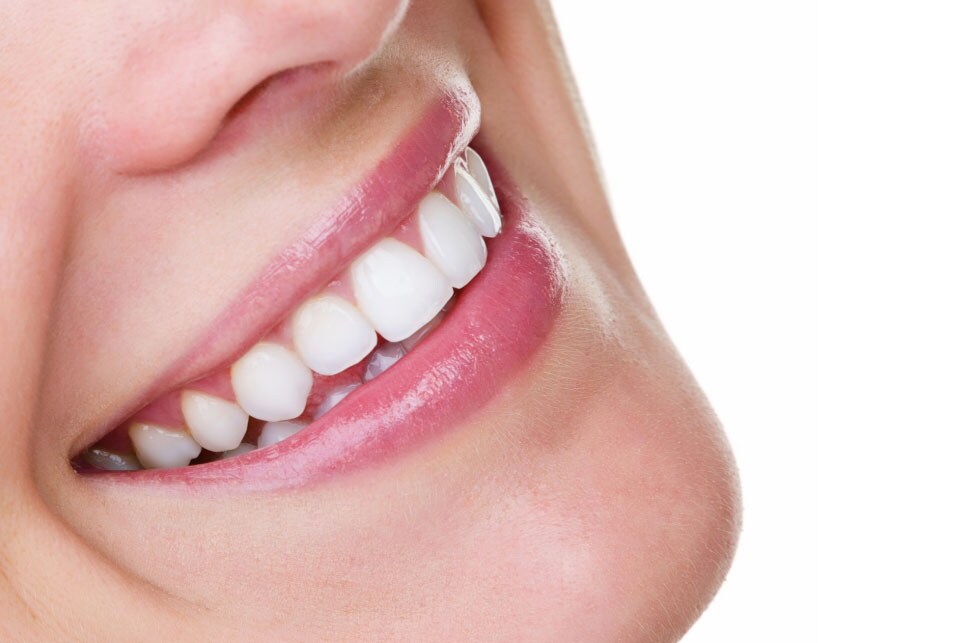
orthodontics
Cosmetic Dentistry - Do we always need to grind down teeth?
Cosmetic dentistry is sometimes associated with the need to shave down a patient’s tooth in order to improve its aesthetic. It’s important to us as dentists to help guide patients through their smile journey, to ensure they obtain a safe but nice result improving the aesthetics of their smile. In this short article, Dr Sam Koh will summarise cosmetic dental treatments and suggest how we can improve a patient’s smile with different options, and whether these require us to shave down a patient's teeth.
ARTICLE

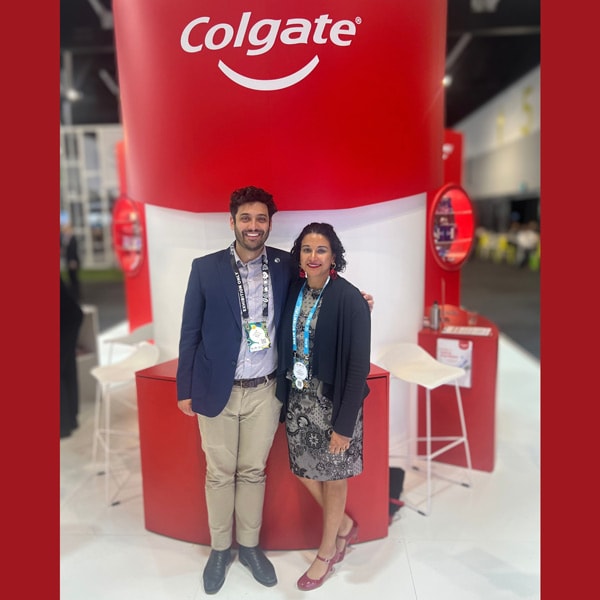
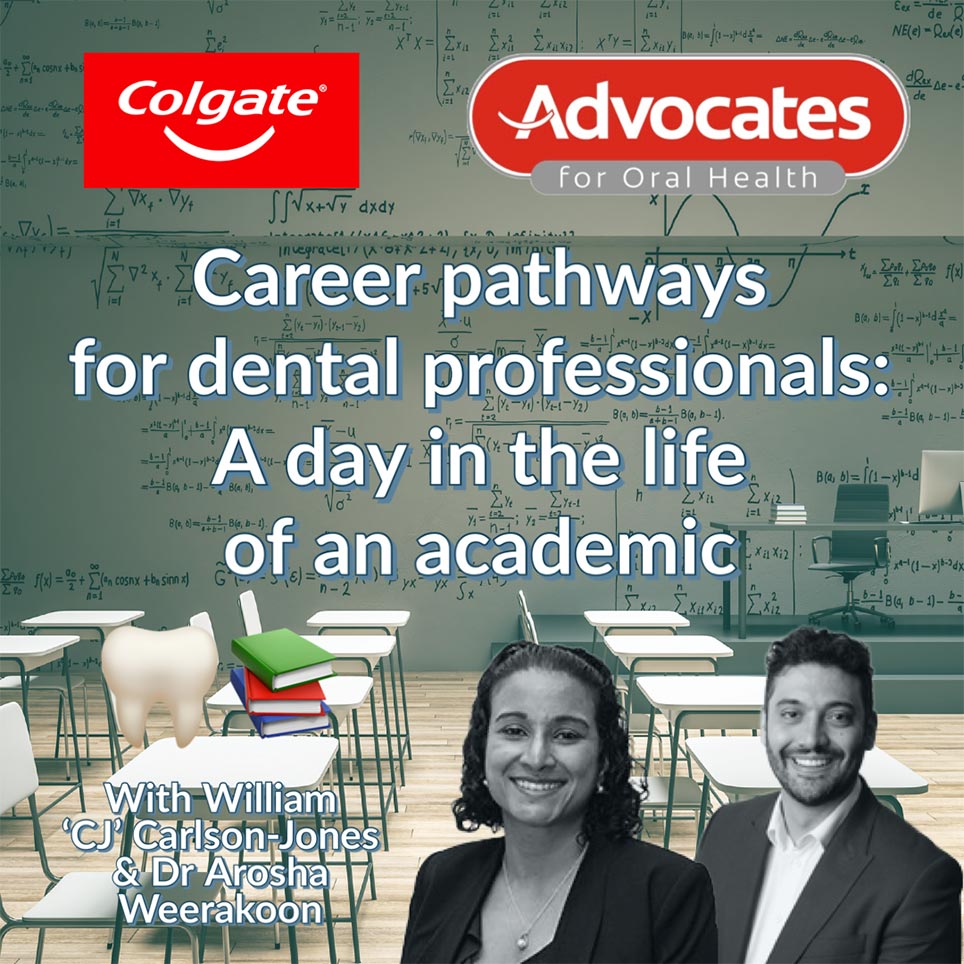


kids-oral-health
Paediatric dentistry: Early and late eruption of teeth - How to effectively communicate with parents
The eruption of a child's teeth is a natural and gradual process that varies amongst individuals. Understanding the normal sequence of tooth eruption can help parents know what to expect and when to seek professional advice. Parents have various concerns about teeth eruption which is a significant aspect of development. Some concerns they may have are when teeth erupt too early or when teeth erupt late and also when teeth may erupt in an irregular pattern. There is a general guideline for teeth eruption and it is the responsibility of oral health professionals to provide parents, families and caregivers with the right information at the appropriate time. Communicating with parents and caregivers about early and late eruption of teeth is crucial for ensuring proper dental care for children, maintaining optimal oral health and avoiding complications.
ARTICLE

prevents-cavities
Reframing dental care towards preventive care series – Part II
As discussed in Part I of this preventive care series, the merits of routine oral screening hinge on the progressive nature of oral disease processes and their reversibility (or at least a possibility to minimise morbidity) if diagnosed in their infancy. Poor service engagement undoubtedly diminishes opportunities for health screening, education and interceptive treatment. While barriers to accessing dental care are manifold at the systemic and individual levels, there is scope to optimise service delivery to capture patients early in the oral disease process to provide proactive dental care rather than fighting the fires of end-stage disease. Talking with friends in the user experience (UX) space, I’m always humbled by how far we’re lagging behind in dental land. Even if our practice has evolved towards creating a more comfortable and patient-centred experience, the optics of this are often clouded by intergenerational dental trauma and individuals’ deeply entrenched negative outlook towards dental care. While the old, “gee, that wasn’t as bad as I’d expected!” provides us with a glimpse into a converted patient, how do we break the cycle of problem-oriented presentations and encourage patients to engage in prophylaxis rather than end-stage management? Targeting affordability and accessibility is where we need to start
ARTICLE

prevents-cavities
Hidden Sugars – What are they? Where are they?
Understanding dietary factors and the role they play in oral health holds the key to preventive dentistry. So what does that look like for you? What dietary factors or what I call ‘Hidden Sugars’ are there, lurking in the unknown waiting to cause some havoc? I’m sure we can find some, so let’s take a look.
ARTICLE

better-breath
Mouthrinses - a guide for recommending the right rinse for your patients
The use and selection of mouthrinses or mouthwashes is one of the more common queries patients ask of their dental professional. There are many options available on the shelves of supermarkets and pharmacies which can be quite overwhelming not just for patients, but also for us clinicians. The following article may serve as a guide to better help you understand which mouthrinse you can recommend to your patients to support their oral health.
ARTICLE

better-breath
Bad breath - common causes and treatments
Bad breath can commonly be attributed to dental and oral hygiene issues. As such, it is an issue that dental professionals should be well-equipped in openly discussing should patients enquire about it. In this short article, Dr Sam Koh explores and summarises the most common causes of bad breath as well as simple ways to prevent or treat it
ARTICLE


Acid erosion - things to be aware of including diet
Dental erosion or tooth-wear is a challenge for oral health practitioners as it is a multifactorial condition affecting both children and adults. It is increasing in incidence and prevalence due to modern-day diets and habits. The majority are aware that a high sugar diet causes dental issues however, most are unaware of the role of acidic foods and beverages.
ARTICLE

gum-health
Wisdom teeth - What do you need to know about the referral pathways?
Wisdom teeth or third molars have the greatest variability in development, eruption times, tooth morphology and position. They are commonly associated with impaction due to the lack of space for eruption. Impacted wisdom teeth sometimes require complex extractions whereas others require simple extractions. Knowing how and when to refer to an oral maxillofacial specialist is a great skill. Some cases provide an opportunity to improve confidence in carrying out minor oral surgery but others need to be treated by a specialist. Most private dental clinics are now equipping themselves with the latest technology which is an exciting learning opportunity. With modern day technology/software referrals are simple and streamlined so that urgent cases can be dealt with promptly. Connecting with specialists in the community, knowing the referral process i.e. how to refer, when to refer and when not to, improves clinical practice.
ARTICLE

gum-health
The Importance of Interdental Cleaning - A Recommendation Guide for Dental Practitioners
Patient’s often ask their dental professional for assistance with the selection of the appropriate interdental cleaning tool to complement brushing twice daily. Since many options exist on the shelves of supermarkets and pharmacies, this can be quite overwhelming for both patients and us, as clinicians. In this article, each of the interdental cleaning tools will be explored to better guide clinicians on recommending the ideal tool for their patients to support their oral health.
ARTICLE

orthodontics
Ensuring Longevity in Your Dental Career through Ergonomics and Stretching
Dental professionals see many patients a day and provide a variety of different procedures requiring them to use specific body movements and positions for long periods of time. This increases the prevalence of musculoskeletal disorders among dentists and if chronic and severe, can in some instances reduce the longevity of a clinician’s dental career. Many dental professionals accept that in the realm of health and wellbeing, prevention is always better than a cure. In this article, concepts of dental ergonomics and stretching will be discussed to allow dental professionals to practise with greater ergonomic safety and prevent work-related musculoskeletal disorders from occurring and ensure longevity in a dental career.
ARTICLE

kids-oral-health
Mastering Paediatric Oral Care: Effective Techniques for Brushing with Kids
Toothbrushing can be a difficult sport, one not so easily grasped by all those on the playing field. Particularly for our young ones, trying out for the first time. So when is it really time to start getting more involved? Poor oral hygiene is commonly seen in many who lack the understanding and education around oral hygiene practices. Which is why with early intervention and awareness around toothbrushing, amilies are more likely to experience positive outcomes for our future generations.
ARTICLE



gum-health
Loving your dental career - Finding the best dental you and pursuing your passions
Stressed about what to do and where to work when you graduate? After dental school, what career options are out there? Do we all have to become dentists and therapists working in clinical settings from 9-5? In this short article, Dr Sam gives an overview of what options are available after you graduate, and describes how your dental qualifications are able to open the door to numerous career pathways apart from working as a clinician.
ARTICLE

gum-health
Antimicrobial Resistance – what is it and what can we do about it?
Antimicrobial resistance (AMR) is a growing global health crisis. As bacteria, viruses, fungi and parasites evolve to resist the effects of antimicrobial drugs, the efficacy of treatments diminishes. This leads to longer hospital stays, higher medical costs, and increased mortality [1, 2]. As dental and oral health professionals, we play a critical role in reducing AMR.
ARTICLE

gum-health
The Importance of Preventive Dentistry in Australia: A Guide for Dental Professionals
Minimally invasive dentistry yields impressive results in preventing oral disease and identifying patient needs early. With the guidance of a dental professional, patients and their families can gain a better understanding of their oral health and take better control of it throughout their lives.
ARTICLE

gum-health
Understanding the Oral Microbiome - what and why?
As dental professionals, we are very attuned to understanding how dental plaque and biofilms contribute to dental diseases. However, one area that is still being understood better is the role of the oral microbiome and how it supports the natural functions of the oral cavity. This article I have written for Colgate Palmolive breaks down what the oral microbiome is and why it plays a pivotal role in helping our patients optimise their oral health.
ARTICLE
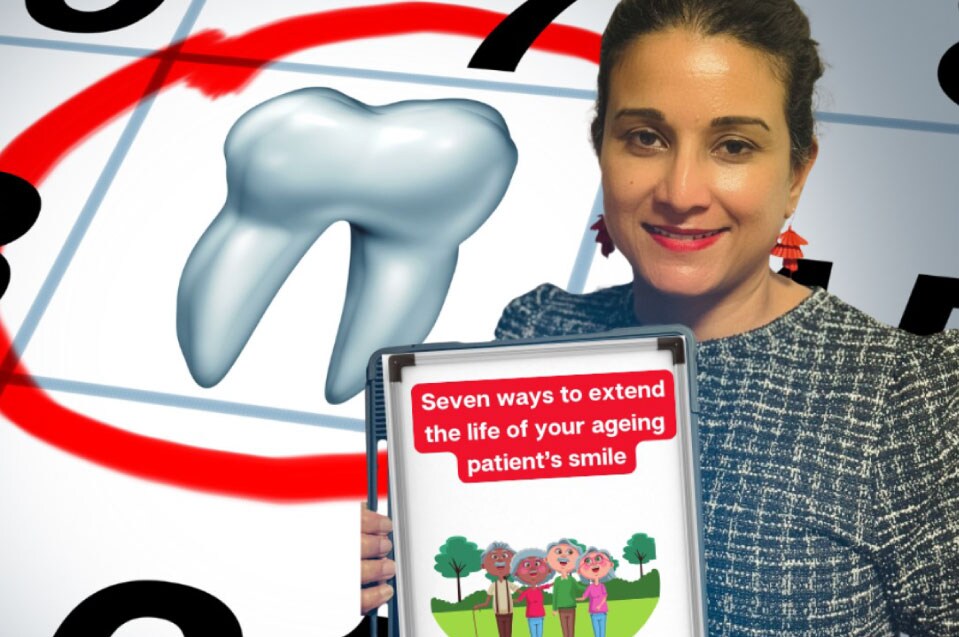
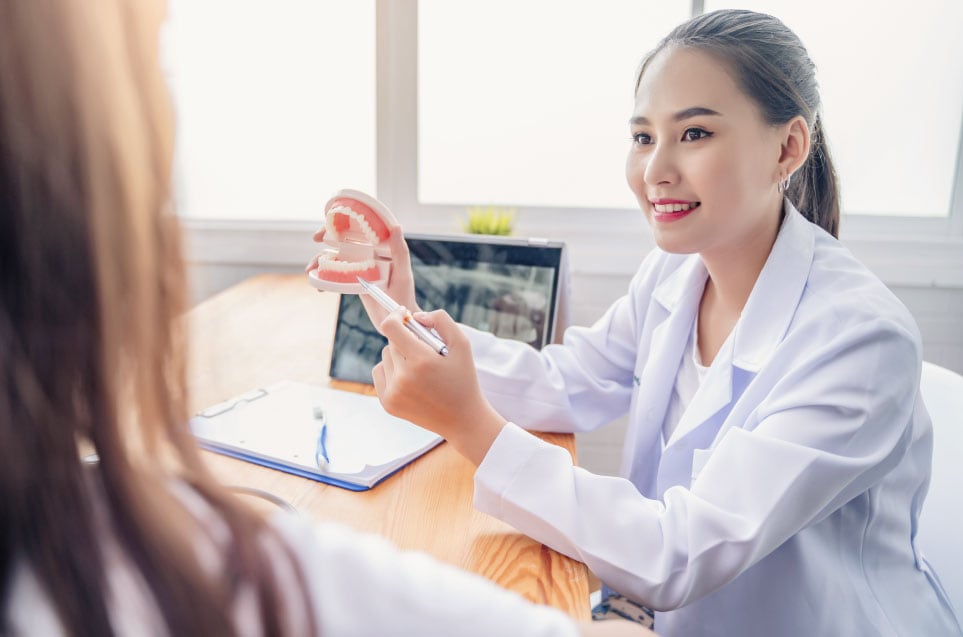
gum-health
Oral Health and HIV: Insights for Oral Health Professionals
This article discusses human immunodeficiency virus (HIV) and oral health in the context of World AIDS Day. A brief background on World AIDS Day and a definition of HIV is given, as well as recent information on the successful HIV response in Australia. The article concludes by providing information on HIV treatment, how HIV and oral health are linked, and the importance of addressing stigma.
ARTICLE
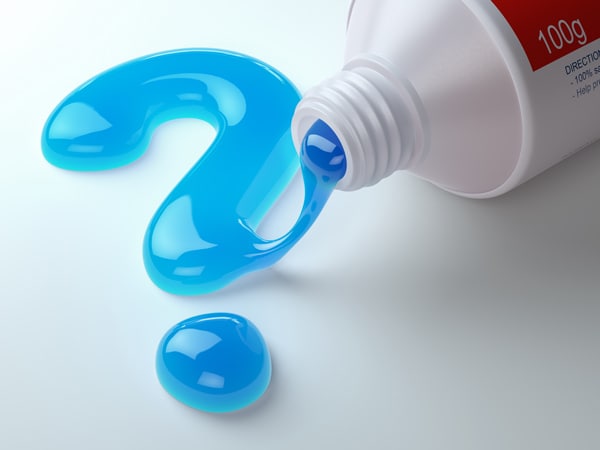

reduces-sensitivity
Oral Health in the Rural Setting
Oral health is a critical component of overall well-being, yet for many Australians living in rural and remote communities, accessing dental care remains a significant challenge. The disparity in oral health outcomes between urban and rural populations highlights the urgent need for improved healthcare infrastructure, increased workforce availability, and culturally appropriate care models.
ARTICLE

reduces-sensitivity
Five tips to help your culturally diverse patients
What is your cultural lens? We use our cultural lens to create perspective, and to make sense of the world we live in. Our lenses are influenced by our cultural background, beliefs, values and experiences (Herselmen, 2007).
ARTICLE

nutrition
Pain to productivity – navigating and maintaining a successful dental career with a chronic condition
Health professionals are expected to care for others. Therefore, having a chronic medical condition such as arthritis, diabetes or mental health issues can be challenging and isolating. Health professionals may face lack of support from employers, many experience discrimination and stigma, or supervisors/mentors may make it difficult to manage the chronic condition due to lack of understanding.
ARTICLE
gum-health
The Importance of Tracking Oral Health
One of the greatest challenges we face as dental professionals is helping our patients be aware of the state of their oral health as well as maintain it in the long term. In this article, I hope to share some insights into the importance of tracking oral health and tools available to help your patients maintain optimum oral health.
ARTICLE
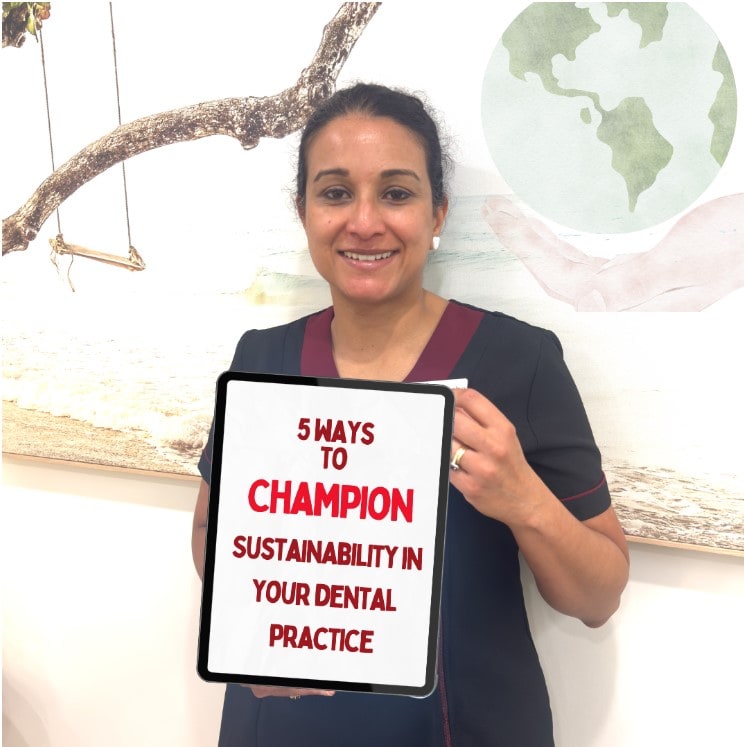

gum-health
Reframing our relationship with failure – Every success comes from a failure and having a positive relationship with failure supports a growth mindset.
As dental professionals, one of the most challenging aspects of our careers is how we navigate our relationship with failure. Traditionally, failure has been viewed as an outcome that is unacceptable and to be avoided at all costs. In this article for Colgate Palmolive, I explore a different perspective on failure to allow you to reframe failure from a growth mindset point of view and allow you to thrive even in the midst of a failure.
ARTICLE

gum-health
The lecture – how you can empower patients to understand the bigger picture and feel less embarrassed about their oral health
Talking about oral health is difficult for many of our patients. People may feel embarrassed about the condition of their teeth and gums or fear judgment from oral health professionals.
ARTICLE


prevents-cavities
Caries risk in elderly patients
Dental caries is one of the most prevalent chronic non-communicable diseases in the world, and the older population is at a disproportionately high risk. In Australia, the Australian Dental Association Oral Health Tracker estimates that only 10.7% of adults over 15 years have never experienced tooth decay.
ARTICLE









gum-health
The Importance of Preventing and Managing Dentine Hypersensitivity in Patients with Periodontitis
As dentists, when we diagnose patients with periodontitis, our first priority is to treat that disease and help our patients address their oral health problems, including through behaviour change.
ARTICLE

gum-health
Dentine hypersensitivity: why do some people suffer and others don’t?
Throughout your dental education and career, you will no doubt come across dentine hypersensitivity often. In this article, we explore the causes of this very common condition and consider why some people are more susceptible to sensitivity than others.
ARTICLE
Join us
Get resources, products and helpful information to give your patients a healthier future.
Join us
Get resources, products and helpful information to give your patients a healthier future.





